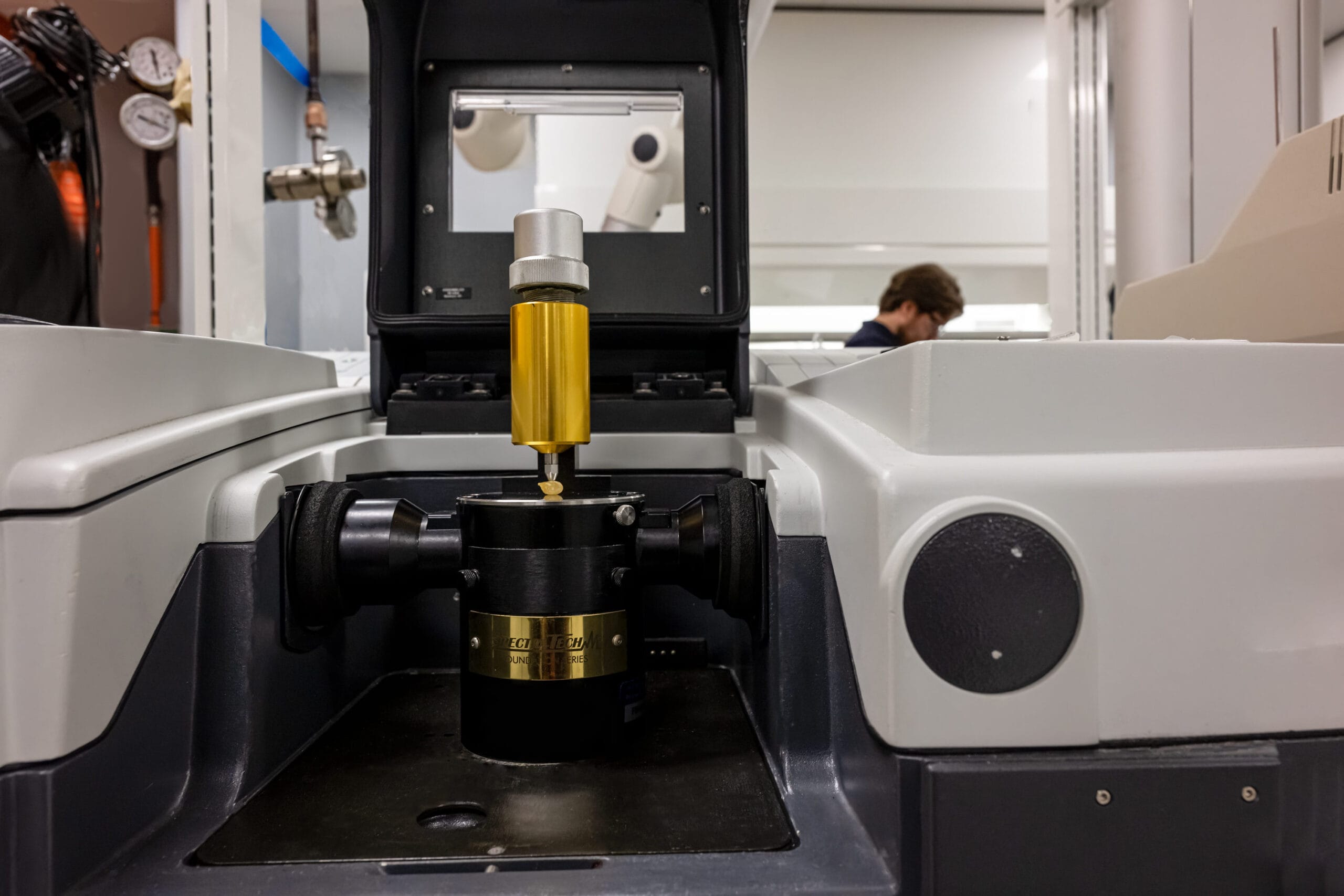
Deformulation
Various Chromatography techniques are used to identify and quantify different categories of stabilizers.
Antioxidants, UV absorbers, and hindered amine light stabilizers are used to protect polymers from degradation not only during processing but also while being used by the end customer.
Approaches
Phenolic antioxidants are measured using a reverse phase high performance liquid chromatography (HPLC) method. This is a custom method that is based on ASTM D6042, “Standard Test Method for Determination of Phenolic Antioxidants and Erucamide Slip Additives in Polypropylene Homopolymer Formulations using Liquid Chromatography (LC).”
HALS are measured using size exclusion chromatography with photodiode array detection (SEC-PDA). This custom method offers quantitative analysis of a handful of HALS.
If you have specific compounds of interest, please contact us to discuss if these are already included in our setup and calibration. If it isn’t, we’re happy to discuss your specific needs and the best method for your compounds of interest.

Primary Antioxidants
Sterically hindered phenols (e.g., BHT) trap peroxy radicals by acting as hydrogen donors. Most are higher in molar mass than BHT so as to reduce volatility and migration. Aromatic amines act as hydrogen donors but can cause discoloration, so they are primarily used in rubber materials.
Secondary Antioxidants
Some (e.g., phosphite secondary antioxidants) transform hydroperoxides to stable products while others, such as thiosynergists, decompose hydroperoxides.
Alkyl Radical Scavengers
Alkyl radical scavengers interact with alkyl radicals which could otherwise lead to degradation of the plastic. This includes HALS (Hindered Amine Light Stabilizers, which also promote light stability), hydroxyl amines, benzofuranones.
Light stabilizers are used to protect polymers from degradation by UV light. This class includes UV Absorbers and HALS.
UV Absorbers
These additives absorb UV energy that could otherwise lead to breakdown of the polymer. Examples include 2-hydroxybenzophenones and 2-hydroxybenzotriazoles.
HALS (Hindered Amine Light Stabilizers)
These additives scavenge free radicals. They are usually of higher molar mass and can regenerate, thereby providing long-term thermal and light stability.
Sample Considerations
Generally, at least 100 mg is required per method. Methods cannot identify materials other than those included in the standards mixture.
We encouraged you to contact an expert to discuss your needs and the testing protocol that will be suit your end goals..
Experience
We have decades of experience analyzing materials and finished products for polymer stabilizers. Some examples of our experience include:
- Verification and quantitation of specific stabilizers in products
- Competitor product deformulation / reverse engineering to determine additives
- Confirmation of the levels of additives in a consumer product which was degrading too quickly
- Litigation cases involving pipe failures. Commonly paired with ASTM D3895 for oxidative induction time (OIT).
